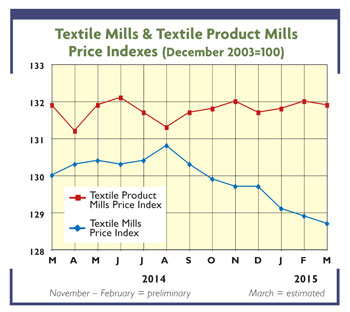Sweden-baesd Södra has announced a major growth plan which involves investing in all three of its Swedish pulp mills, including Mörrum, where Södra’s TextilePulp is made. TextilePulp is the name given to the company’s dissolving pulp for the textile industry.
The SEK-700 million ( $80 million) investment at Mörrum is crucial to the mill’s future and the company’s development of Textile Pulp. The mill has two lines, one for paper pulp and one for textile pulp. The upgrade will mean the capacity of the latter can be increased from 150,000 to 170,000 tpy, but it is the quality improvements that Dag Benestad, Södra’s head of TextilePulp, is most excited by.
“It is of great significance that we will be able to run more birch on the line in the future,” Benestad explains. “An ageing woodyard has been something of a bottleneck and meant that we had to import wood. But with the new investment in state-of-the-art technology, we will be able to use more of our members’ own birch. This makes environmental and logistical sense and will see an increase in the quality and purity of our pulp.”
Faster Operation
Once the new woodyard is installed, as well as using more birch from Södra’s members’ forests, the mill will be able to run its lines at higher speed. This will increase capacity and produce a premium-quality, consistently-pure textile pulp.
The most significant wood handling technology being installed is the deicing. Mörrum will use process water from the pulp mill to deice the logs in winter time. Even in Southern Sweden temperatures can remain below zero for several months of the year.
The recycled water is applied at around 50˚C. Water at this temperature is of little use elsewhere in the process, and will have fallen to that temperature having already been reused in another part of the mill. But for deicing this otherwise-redundant heat is ideal to make debarking much more effective. This is most significant for the production of dissolving pulp, for which the absence of impurities is particularly important. “Purity is vital for dissolving pulp for the functionality and runnability of the customer’s process,” said Woodyard project leader Ulf Jimson.
Since wood handling including de-barking was a bottleneck, this investment will have a real impact on product quality, on both lines. It will take chipping and debarking to a new level, resulting better chips and even better pulp properties.
Process Improvements
Another motivation for the investment is to create a better working environment and for the mill to be “a better neighbour.” “We are within the permissible limits for noise for those living near the mill, but only just,” said Elna Håkansson, head of environment at Mörrum. “The new woodyard will improve the situation considerably and be beneficial for operators, too.”
Håkansson also points to the wider environmental aspect of improved debarking efficiency: “We will be able to sell more bark as biofuel as there will be an excess of bark over our needs in the mill,” she said. “Mörrum is close to being fossil fuel-free – we just need fossil fuel occasionally for the lime kiln. Our ambition is to be 100 percent free of fossil fuels.”
“It has always been our intention to secure our position among the top three producers when it comes to quality,” said Benestad. “We need to be there if we are to secure good margins for the long term, and this investment will be a big step towards achieving that goal. We intend to be the last one standing when the competition gets tough.”
The fact that the raw material will come from Södra’s members’ forests adds peace of mind to the environmentally-conscious buyer. Södra is a unique cooperative of more than 50,000 members who together make up the largest private landowner in southern Sweden. In many cases, their forest holdings have been in the same family for generations and sustainability is at the heart of the business. Forests are certified to FSC and PEFC standards and each member receives a green plan from Södra laying out best forest management practices and areas of conservation.
Competitive Market
There was a time when paper pulp producers hopped on the dissolving pulp wagon in search of higher prices and better returns. But when too many had the same idea, the market became oversupplied and prices dropped, with the result that some producers switched back to paper pulp. Benestad is keen to point out that Södra has no intention of exiting the dissolving pulp market: Quite the opposite, as this new investment confirms. “Despite falling prices, we are committed to this market,” he explained. “The viscose market continues to grow at 8- to 10-percent per year and we believe that will continue over the next three to five years at least. Prices are now so low that up to half of the producers in this market are losing money, compounded by the duties inflicted on exports to China, which is still the biggest market for viscose: The country accounts for two thirds of the world’s viscose production, both for a growing domestic market and for export.”
Imports of dissolving wood pulp to China increased by 15.6 percent in 2014 after growing by 14 percent in 2013 – a total increase of around 500,000 metric tons.
The world’s production of textile fibers is estimated to have increased by slightly less than 5 percent in 2014, reaching 93 million metric tons or four million metric tons more than the previous year. Reason enough for Benestad to believe that textile fiber production will continue to advance ahead of world gross domestic product (GDP) growth, maintaining the positive differential seen since the global recession. “Our forecast shows the textile fiber market continuing to grow faster than GDP in 2015-2016, although slowing slightly compared to the pace of the last four years,” said Benestad. World textile fiber output is projected to reach 101 million tonnes by 2016 after rising 4.4 perecent annually from 2014.
On the plus side for dissolving pulp producers, the fact that returns are currently low means investment in new capacity is limited and there are not many startups planned for 2016-2017 — another reason for Benestad’s optimism that the market will start to pick up by the end of 2015.
April 14, 2015





